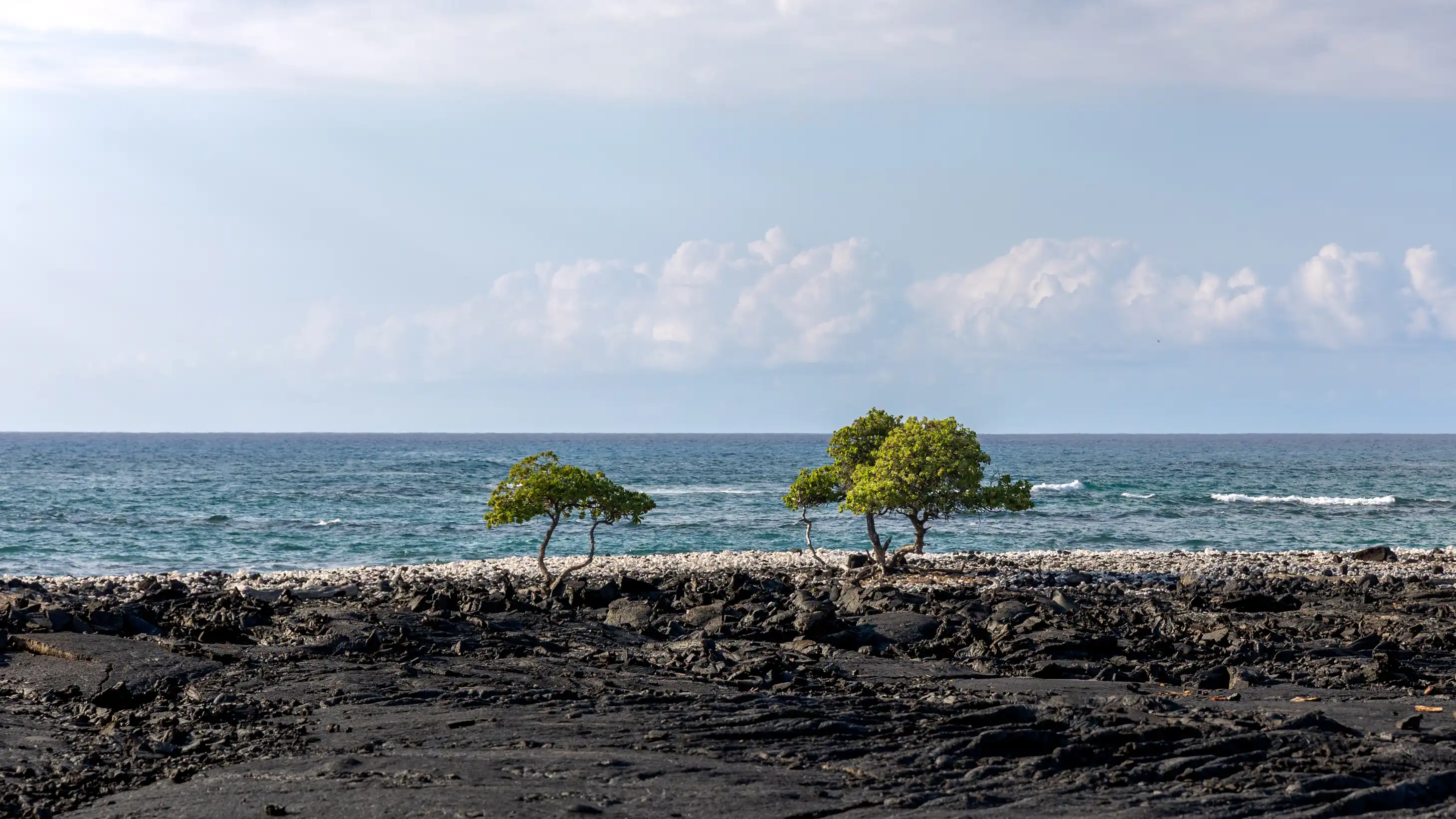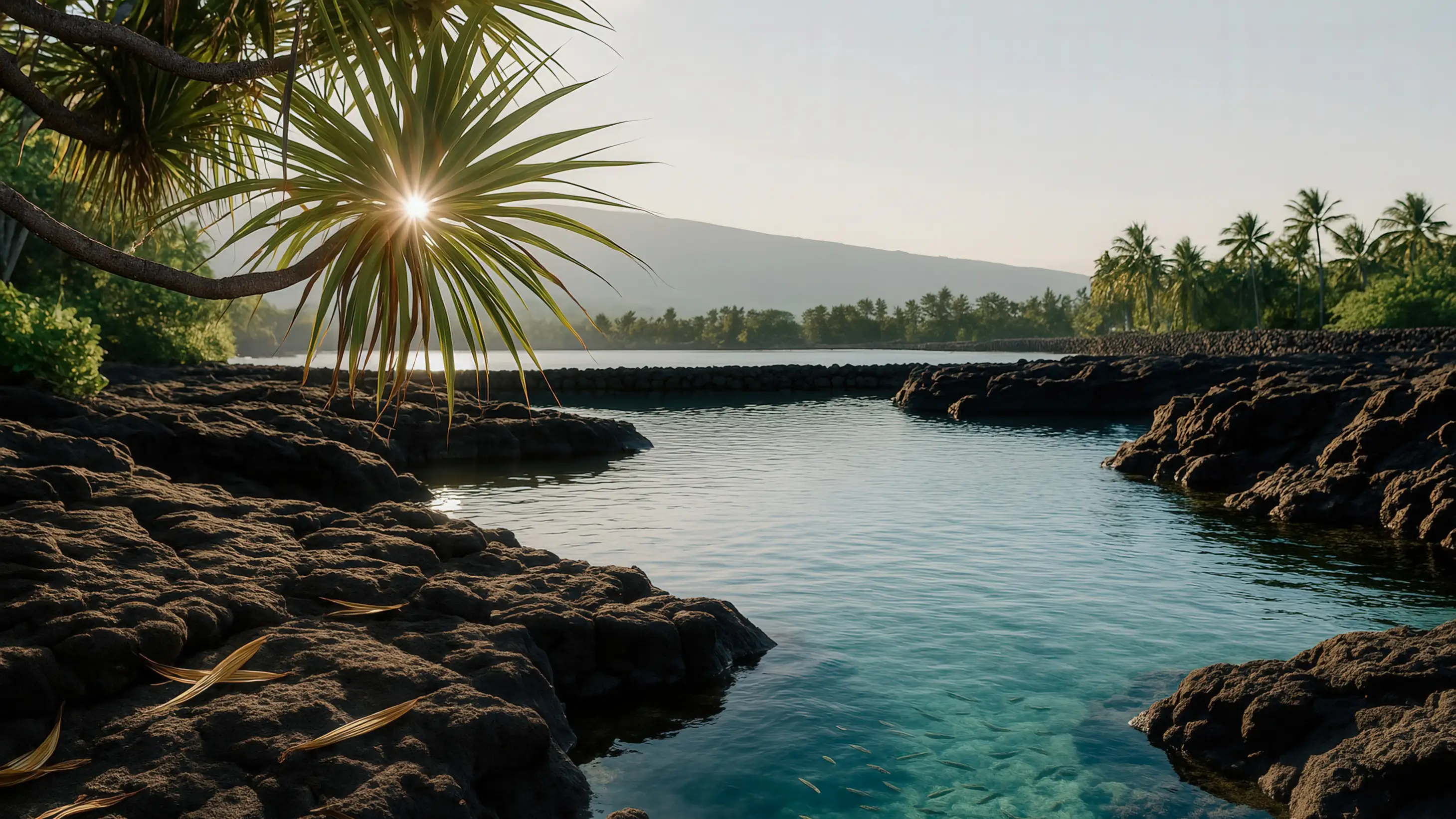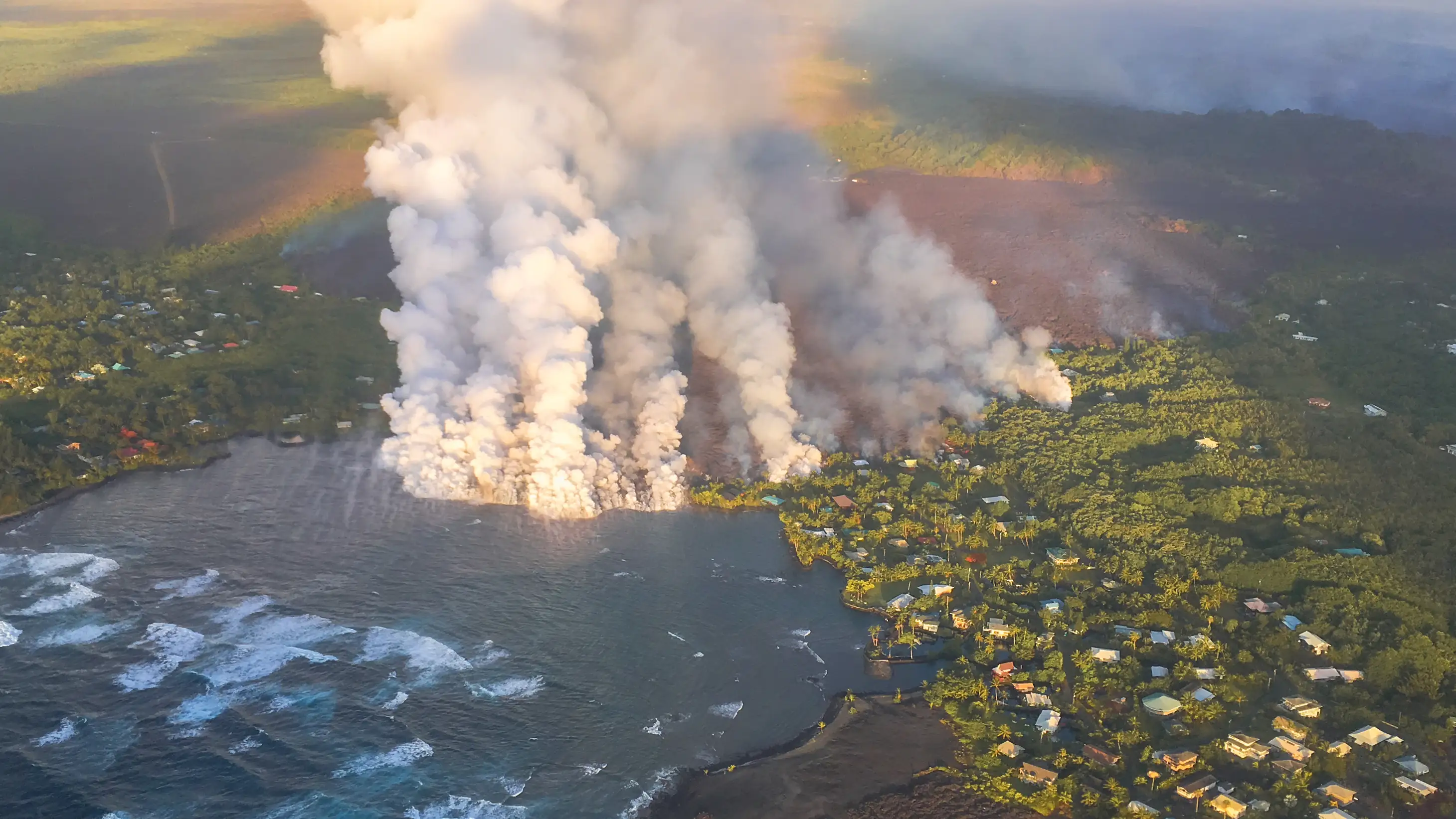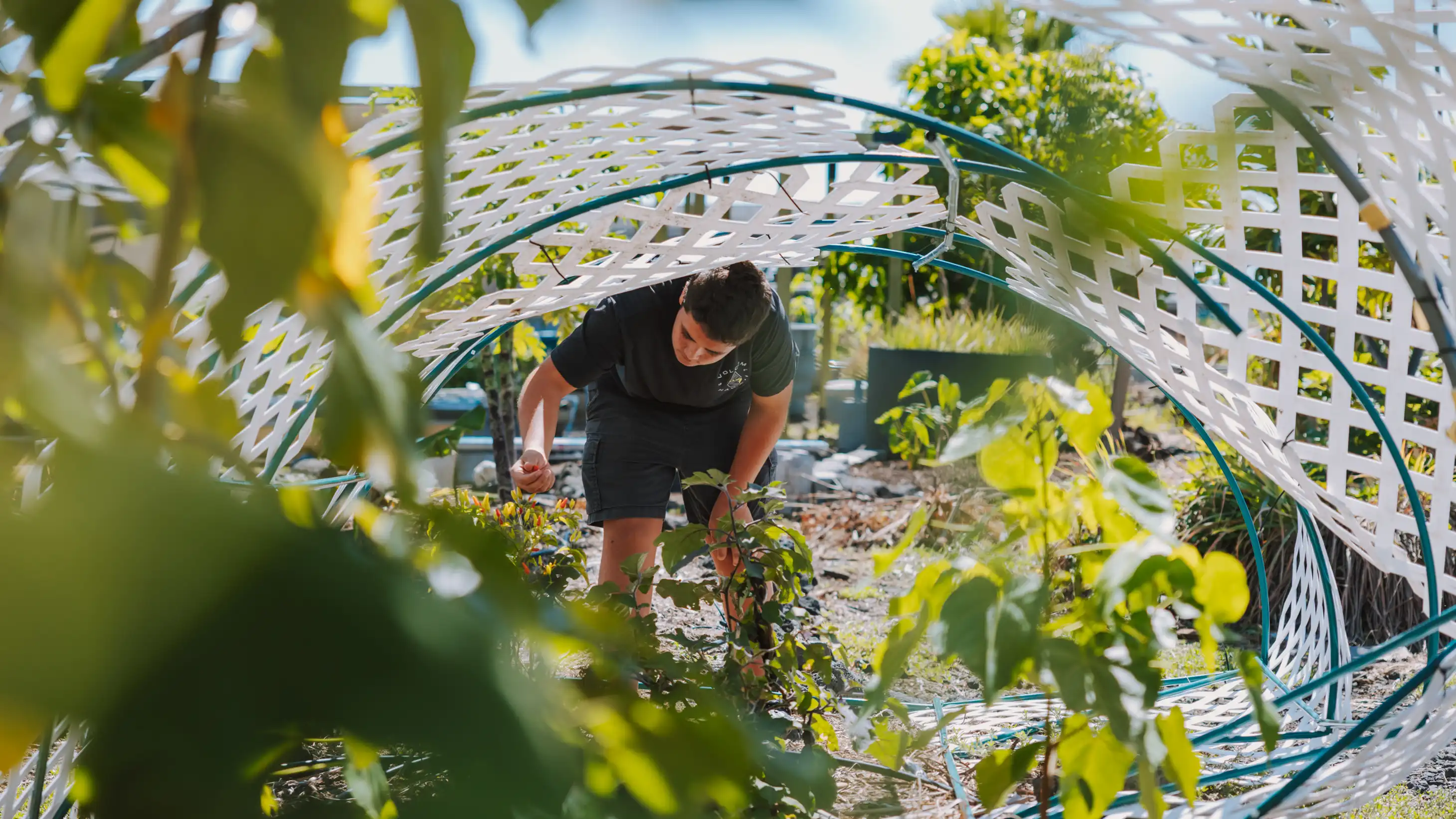Auntie Hannah Kihalani Springer shares the story of Pele’s arrival in Kona during the rise of Kamehameha. It’s a tale rooted in landscape, genealogy, and the deep responsibilities of living well with the land.
"Kamehameha, a soon to be mighty war chief across the islands, as much skill as he had in the hierarchy of things, he was still not paramount."
So for our story shows, depicts her coming across the landscape to the fish pond. Her eye has been caught by the sails offshore, so she knows that the fishing fleet is offshore. So she comes to ask for food. She's denied the food. She's told to go to the konohiki. The konohiki tells her that the pond and all of the produce from it belonged to the chief Kamehameha.
She turns and goes back to the uplands. And on her way, a voice calls out "e hele mai 'ai" and Kapulau invites her into his home, where he feeds her modestly some fish, some poi, some pa'akai. And she tells him to put lepa to put flags at the corners of his house because some mysterious activity will occur on the mountain that night.
She continues on into the uplands to the village of Manuahi. Most of the people are out tending to the work of the village, the breadfruit grove of Kamehaikana. Two girls are there, roasting breadfruit. The woman instructs them that the breadfruit is ready to eat. They say, oh, we have only just put it in. And she assures them that it's ready. And in that time when gods and men were intimate and familiar and walked the earth together, such instructions were to be followed. The girls found when they checked the embers, the breadfruit was indeed done.
"And in that time when gods and men were intimate and familiar and walked the earth together, such instructions were to be followed."
They enjoyed their meal. And the woman told, again, to put lepa at the four corners of the home of Pāhinahina, one of the two girls who was roasting breadfruit. One of the two girls who was roasting breadfruit for her patron, for her family, Pele, the other girl, Kolomu'o prepared the breadfruit for the patron of her family who was La'i.
So it was Pāhinahina's preparation that prompted the woman to tell them to check the embers and that the breadfruit would be ready. And when she left again for Pāhinahina's family to put out the four lepa because of the doings that would occur on the mountain that night.
So later that night, as seen from this northwest flank, imagine being on this northwest flank of Hualālai, say, at the village of Manuahi where we were this morning, and looking up the hill and seeing fire off to the left, and thinking that it was the 'ua'u hunters—some more cultural information embedded in the mo'olelo. So thinking that was the 'ua'u hunters plausible, and then fire appears on the right.
Hmm. Maybe it's the foresters up there getting timber, what-lā, and then the realization as the fire breaks out at Puhiapele and environs where we were today, the realization that it was the arrival of Pele.
And some say that it was because of Kamehameha and his assigns not sharing hospitality with her, that she was compelled to take out the pond Pā'aiea in the lowlands and the breadfruit grove of Kamehaikana in the uplands.
For us, when we look at the story through the civic engagement lens, it's that Kamehameha, a soon to be mighty war chief across the islands, as much skill as he had in the hierarchy of things, he was still not paramount.









